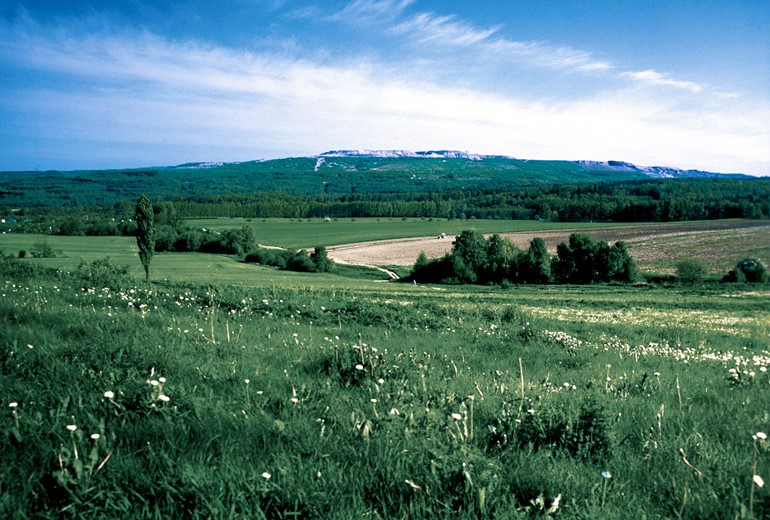PGE restores the usefulness and natural character of post-mining areas in order to recreate their previous environmental features or shape new ones. To this end, types and methods of land rehabilitation are defined and visions of landscape after completed rehabilitation activities are presented.
The post-mining areas of the Bełchatów lignite mine are being rehabilitated primarily as forest land. It can be provisionally estimated that about 5,500 ha (including protective strips of land around water reservoirs) will be eventually made available for afforestation purposes. So far, the Bełchatów mine has handed over more than 1,500 hectares of rehabilitated and afforested land to the State Forests.
The rehabilitation of post-mining areas in the Bełchatów Lignite Mine is carried out on the basis of a technological project for the Bełchatów field and the Szczerców field, as well as on the basis of annual detailed technical projects for individual areas.
The total area of 2,296 ha was rehabilitated from the beginning of the project until the end of 2020. All rehabilitation works were completed at the external waste rock dump of the Bełchatów field, i.e. Mount Kamieńsk. At present, the external waste rock dump of the Szczerców field and the internal dump of the Bełchatów field are being rehabilitated.
Mount Kamieńsk is a flagship example of comprehensive land rehabilitation activities conducted by PGE Górnictwo i Energetyka Konwencjonalna. At 395 m above sea level, it is the highest hill in central Poland. It was formed from 1,354 billion m3 of overburden taken off in the process of stripping successive layers of lignite. At present, it is one of the main tourist attractions in central Poland. A ski lift, hiking and cycling routes and a 620-metre long sledge run make Mount Kamieńsk an important point on the map of summer and winter sports enthusiasts.
The company also completed the formation of a second dump, this time at the Szczerców field. This process took 17 years and resulted in the creation of a “twin” Mount Kamieńsk. The dump was formed from almost 1 billion m3 of overburden covering lignite deposits. Currently, the mountain has a surface area of 1114 ha and a relative height of approximately 170 m. By the end of 2020, more than 4 million trees had been planted on the mountain as part of the rehabilitation process, thus ensuring the area’s biodiversity.
The water surface of the two reservoirs may have a combined surface area of more than 4,000 hectares. The most impressive is their maximum depth of approximately 170 metres. This means that the Bełchatów lakes will be deeper than Hańcza, the deepest lake in Poland. The reservoirs will be filled with water after 2050, when all mining works aimed at preparing the post-mining pits in the Szczerców field for flooding will have been completed. The water level in both reservoirs will be rising gradually, which will take approximately 20 years. The surface area of the final pits in both fields will be about 4300 ha (2100 ha in the Bełchatów field and about 2190 ha in the Szczerców field).
In the case of the Turów lignite mine, the rehabilitation of the external waste rock dump, which has been carried out since the 1960s, is aimed at the afforestation of the area. It is conducted on an ongoing basis in locations where mining operations were permanently terminated. As a result of the works carried out, the slopes and shelves of the dump are finally shaped, the slopes are stabilised by controlled rainwater drainage, the top layer of the soil is strengthened and the whole area is protected against erosion, the volume of rainwater runoff is reduced by increasing soil retention, the quality of water flowing from the dump is improved and fugitive emissions are reduced.


The rehabilitated external dump of the Turów mine is a forest complex with the surface area of over 21 km2, which, apart from possessing attractive landscape features, constitutes an invaluable oxygen generating area.
Land rehabilitation activities are also carried out by the company PGE Energia Ciepła. After the termination of operations at a given landfill, the landfill is formally closed and subsequently undergoes the process of green rehabilitation. Vegetation is introduced, grass covers are made and trees are planted. Where possible, measures are planned to restore the economic functions of particular areas.
In the case of PGE Energia Odnawialna, the technological processes, operation of equipment and current investment projects do not cause interference with the biodiversity of protected areas. The green areas in the possession of the company are maintained by dedicated maintenance teams. There are also Special Areas of Conservation Nature 2000 in the vicinity of the company’s facilities. PGE Energia Odnawialna participates in the costs of restocking rivers and lakes with fish in accordance with the provisions of water permits, and constructed fish ladders enable unimpeded fish migration.
In 2020, PGE Energia Odnawialna continued wildlife monitoring (birds and bats) at its Resko II, Kisielice II, Karwice, Lotnisko and Wojciechowo wind farms.
These wildlife research projects provide data on the factual impact of the company’s activities on species richness. Inspections of the functioning wind farms did not indicate any need to take special measures to protect biodiversity. Should such a need arise, preventive measures will be taken. Biological research will be continued in the coming years.